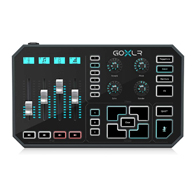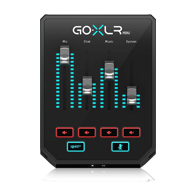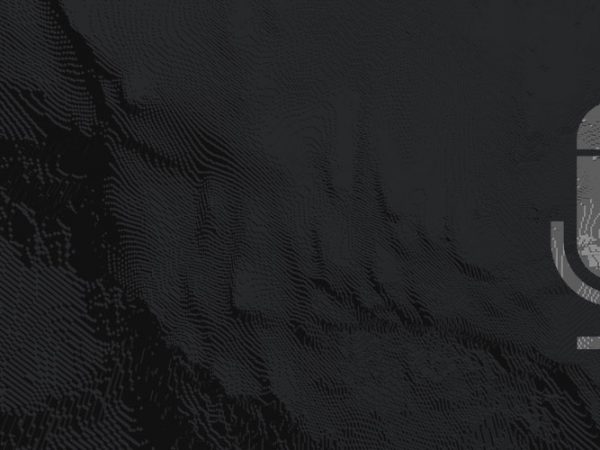So you’re ready to start taking your stream audio more seriously and you’re stuck between the GoXLR vs GoXLR mini to get the job done.
If you’re wanting a little bit of a push to help decide which one you should buy, then keep on reading!
More Features
GoXLR
Are the motorized faders, alongside the sample pad + effects worth the extra money?
Cost Savings
GoXLR Mini
Will you miss the extra features the GoXLR has over the Mini in favor of saving cash?
Cooler Features or Saving Money??
The GoXLR Mini is a smaller, stripped-down version of the bigger GoXLR.
It’s cheaper and offers the same fantastic studio quality, gating, and compression its bigger brother is known for, minus some quality of life features and fun effects.
Which begs the question: are you better off buying the GoXLR Mini instead of the standard GoXLR? We’ll be comparing the two to find out.
And if you’re still stuck on which one is best for you, check out these GoXLR alternatives to help make your decision even harder 🙂
The Specs
| GoXLR | GoXLR Mini | |
|---|---|---|
| OS (Windows, Linux, Mac) | Windows Only | Windows Only |
| XLR Input | Yes | Yes |
| XLR Gain | 72 Db | 72 Db |
| Phantom Power | +48 V | +48 V |
| Line Input/Output | Yes | Yes |
| Headset In | Yes - Rear | Yes - Front |
| Headphones | Yes - Rear | Yes - Front |
| Faders | 4 (Motorized) | 4 (Non-Motorized) |
| EQ | 10 band | 6 band |
| Noise Gate | Yes | Yes |
| Compression | Yes | Yes |
| DeEsser | Yes | No |
| Mute/Swear Buttons | Yes | Yes |
| LED Scribble Strip | Yes | No |
| Sample Pads | Yes | No |
| Voice FX | 6 presets | No |
| More Specs & Reviews | Read more | Read more |

Power, Connectivity, Compatibility
How do the two XLR mixers from TC Helicon stack up in terms of basic functionality?
Power
In terms of power, the larger GoXLR needs an external 12-volt power supply. The Mini is bus powered and has a USB type-B connector in the back.
The larger GoXLR also has a similar USB type-B connector.
Neither device has a built-in power switch. However, there is an optional kit that adds a power switch to the larger GoXLR that streamers can attach to the power connector.
Connectivity
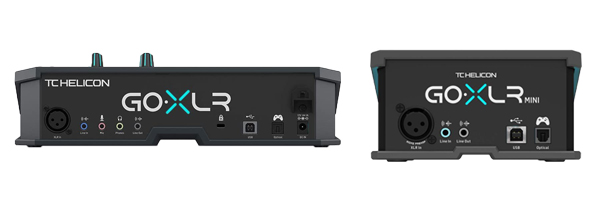
Image: Amazon
As the name implies, both devices have an XLR input in the back. Both devices also have a line in and a line out you can use for connecting an external audio mixer or a camera or practically anything.
Additionally, both devices have a 3.5 mm headset jack input and a headphone jack. These are found in the back of the large GoXLR and the front of the Mini.
They also have optical inputs in case you want to connect your PlayStation or Xbox. To put it simply, other than the location, there’s no difference between the inputs and outputs on these two mixers.
Compatibility
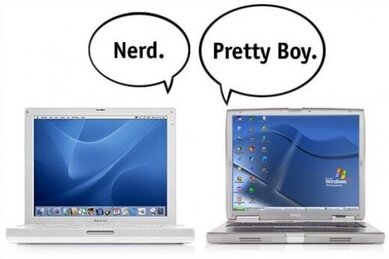
Image: Know Your Meme
Both devices are only compatible with Windows. If you want to use them on a Mac, then you have to install Boot Camp or similar utility software.
Preamp, Gain, Phantom Power
Both mixers have the same Midas preamps that can provide up to 72 dB of gain.
That’s more than enough even for hard-to-power microphones like the Shure SM7B, so you won’t need to use an external inline preamp like a Cloudlifter for extra juice.
The XLR inputs also have 48 volts of phantom power if you require it.
Inputs and Outputs
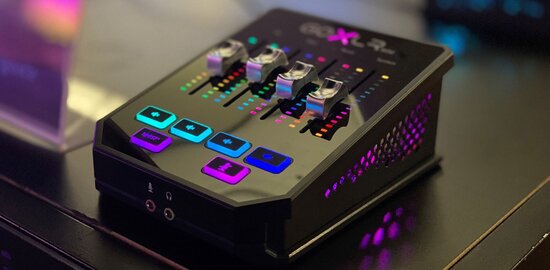
Image: TC Helicon Gaming
The inputs and outputs are identical on both devices. The only difference is that the headphone jack and headset mic on the Mini is located on the front of the device, while they are in the back for the bigger GoXLR.
Faders
Both devices have four faders with a mute switch below each one, but there are some big differences between the two mixers.
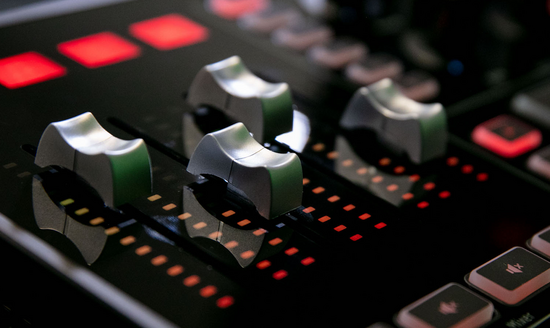
Image: TC Helicon
The first big difference is that GoXLR’s faders are motorized; if you hit the mute button for a particular fader, then it will automatically move down on its own.
The Mini has the same mute buttons, but hitting the mute button won’t cause a fader to move. This is purely an aesthetic feature.
The second notable difference is that the larger GoXLR has LED scribble strips above each fader that you can soft patch with preset inputs to change the page/group/scene.
You can also use the scribble strip to label each fader channel with a unique name and save it on your profile.
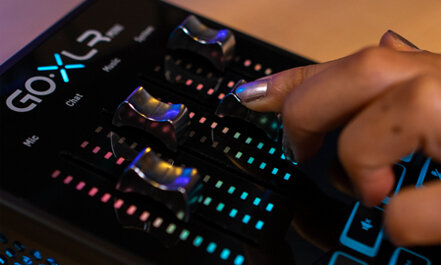
Image: TC Helicon
The Mini doesn’t have LED scribble strips, but you can still soft patch your faders using the GoXLR software.
Samples and Effects
Probably the most obvious difference between the two devices is that the larger GoXLR has a sample pad and voice effects engine with up to six preset sound effects, while the Mini does not.
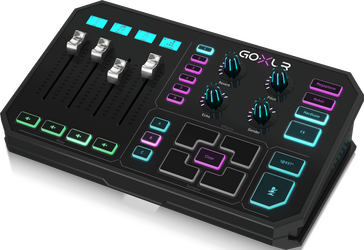
Image: TC Helicon
Having a sample pad and voice effects on the fly can be fun, but they’re not exactly necessary features unless you broadcast a call-in show or do a lot of meme-related sound effects on your Twitch stream.
Mute and Censor Buttons
Both devices have a mute button and a swear button. The buttons are a different size and in a different position on the mixers, but they both work exactly the same way.
Audio Processing
The audio processing on both devices is similar but not quite the same. Here are the main differences:
- EQ – The GoXLR has a 10-band EQ, while the Mini only has a 6-band EQ. The difference may seem significant, but it’s not quite a deal-breaker because the fine-tune mode is good enough to make the sound quality of the Mini sound just like the larger GoXLR.
- Noise gate – Identical. Both devices have a noise gate you can use to control any background noise issues during your stream.
- Compressor – Identical. This is a feature that’s helpful for narrowing the dynamic range of your Twitch stream and making you sound more polished and professional.
- DeEsser – The GoXLR has a DeEsser, but the Mini does not have one. This is probably because the larger GoXLR has more power than the Mini. A DeEsser helps get rid of sibilance or harsh sound frequencies in your vocals, especially if you have a lisp or similar impediment. If this is an important feature for you, then you can always opt for a software-based DeEsser solution.
The Bottom Line
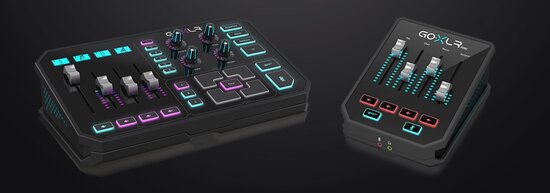
Image: TC Helicon Gaming
Now that we’ve done a side-by-side comparison of the GoXLR and the GoXLR Mini, which one is the best mixer for Twitch streaming?
For the majority of streamers, the GoXLR Mini is more than enough for all your streaming needs.
It has a powerful XLR preamp that can power pretty much any microphone, four faders that can be soft patched, and plenty of vocal processing even without a DeEsser.
The lack of a physical sampler and voice effects engine isn’t really a deal-breaker for most streamers.
However, if you are a veteran Twitch streamer who doesn’t mind spending a little more for features like a DeEsser to keep your voice crisp during long streams and a sampler and voice effects engine for instant meme-worthy reactions, then the larger GoXLR is for you.
It’s a little more pricey, but the quality of all GoXLR products makes them worth the expense.

